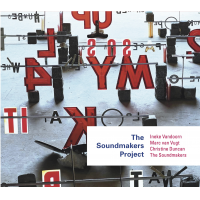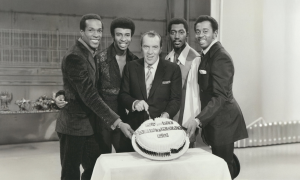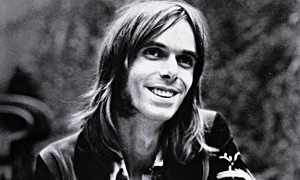Home » Jazz Articles » Film Review » Icons Among Us: An Epic Jazz Documentary, Part 1
Icons Among Us: An Epic Jazz Documentary, Part 1
A host of visionary producers in Seattle have produced an extraordinary TV documentary on the state of contemporary jazz art and artists. Dubbed Icons Among Us: Jazz In the Present Tense, the four-part program features a virtual who's who of young jazz performers talking about their creative struggles and playing their music as they forge new paths of expression. The program is so comprehensive and carefully wrought that it deserves a review that covers all of the characters—musicians, producers and storytellers. What follows is a summary and commentary on the first episode of the documentary. For a window into the entire series, read John Kelman's four-part review.
Creators Michael Revoira, Lars Larson and Pete Vogt working out of Seattle based Paradigm Studios introduce this epic chronicle spotlighting the "young lions" on the scene. Trumpeter Nicholas Payton is seen talking about the necessity of breaking new ground for young artists. Terence Blanchard follows remarking that what is happening now is the "quietest revolution in jazz I've ever seen in my life." Over the commentary is heard the music of the "lions" neatly interspersed with flashes of their performances. Trumpeter Dave Douglas (all of the initial of the commentators are trumpeters) alludes to the difficulty in labeling the music. Guitarist Bill Frisell states that "words are always smaller than what you're trying to describe [musically]." Veteran Herbie Hancock, himself an innovator 40 years ago, sympathizes with the youngsters who are "bringing new blood to jazz—new expression." Trumpeter Russell Gunn defiantly tells us that "jazz is gonna change" as the camera reveals trumpeter Efrem Townes playing in front of the daKAH hip hop orchestra.
The litany of lions continues as we hear saxophonist Justin Robinson wailing new sounds in the Roy Hargrove quintet, guitarist Reed Mathis stretching out with The Jacob Fred Jazz Odyssey and innovative vocal harmony emanating from Nicholas Payton's quintet. As Wynton Marsalis reveals his impatience with insistence on musical categories and definitions we see and hear bassist Eric Revis, trombonist Ku-Umba Frank Lacy and keyboardist John Medeski playing and joining the discussion. Saxophonist Donald Harrison, keyboardist Robert Walter and bassist Reid Anderson remind us that all the musicians need to respect past traditions of jazz ("you have to deal with the history") but pianist Robert Glasper desperately wants to move forward because "I can be badder than Coltrane." Veteran Seattle critic Paul de Barros says that one problem is "we don't understand the relationship between new jazz and society."
It is important to note that all this discussion is never tedious because there are constant cuts to concerts, record sessions and rehearsals cleverly and expertly intermingled.
Especially appealing are shots of pianist Bugge Wesseltoft entertaining a concert crowd by combining his pianism with sonic manipulation, and some sublime sounds from The Bad Plus trio featuring drummer Dave King, pianist Ethan Iverson and the aforementioned Reid Anderson. Pianist Aaron Parks and guitarist Lionel Loueke create dramatic new textures as members of Terence Blanchard's group. They comment on Blanchard's determination to have his sidemen be open and free in their expression.
Saxophonist Greg Osby is particularly articulate commenting on the lack of recognition and credit being given to the contemporary players and tells of his immediate attraction to the art of Jason Moran who, in turn, apostrophizes Osby's leadership. Dave Douglas returns with a quick comment stating that Osby is the "best example of jazz mentorship out there."
This opening segment ends fittingly with scenes of a concert starring Moran playing the piano against the soundtrack of a narrator uttering compelling social commentary.
Tags
PREVIOUS / NEXT
Support All About Jazz
 All About Jazz has been a pillar of jazz since 1995, championing it as an art form and, more importantly, supporting the musicians who make it. Our enduring commitment has made "AAJ" one of the most culturally important websites of its kind, read by hundreds of thousands of fans, musicians and industry figures every month.
All About Jazz has been a pillar of jazz since 1995, championing it as an art form and, more importantly, supporting the musicians who make it. Our enduring commitment has made "AAJ" one of the most culturally important websites of its kind, read by hundreds of thousands of fans, musicians and industry figures every month.

























